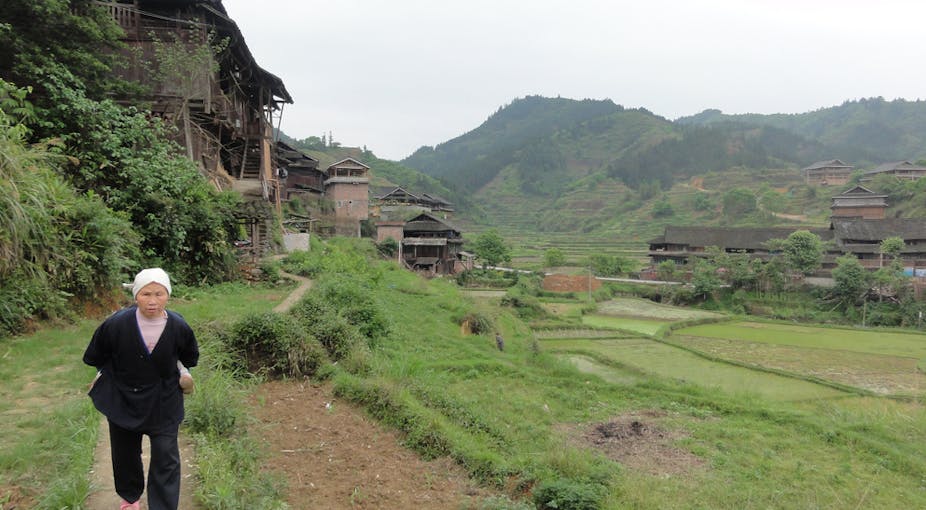For all the economic success that China has enjoyed in recent decades, such as record levels of poverty reduction and growth in real per capita consumption, a consistent conclusion of academic research is that little of this has translated to higher levels of happiness reported by the average Chinese citizen.
Several explanations have been put forward to explain this seeming paradox, such as a deterioration in the physical environment (air quality and the like), but perhaps none is more important than a worsening in the distribution of income. When evaluating subjective levels of happiness, relative income is a crucial factor, and while the poor and middle-class in China have experienced impressive increases in their absolute levels of income, their gains have lagged badly those at the upper end of the distribution.
According to official estimates, the Gini coefficient, an indicator of income inequality that lies between 0 (perfect equality) and 1 (perfect inequality), currently stands at 0.474. This compares with World Bank estimates of less than 0.35 in the early 1990s and puts China in unenviable company. It is much worse than in any OECD economy. For example, in the US, home to the vocal “99% movement”, the Gini coefficient stands at around 0.38.
Moreover, the official estimate is almost certainly understated. Research conducted by leading China economy scholars, Wang Xiaolu and Wing Thye Woo, has pointed to the existence of enormous “grey income”, accruing particularly to high income urban residents, which escapes detection by the statistical agencies. Unofficial estimates of the Gini coefficient produced by academics in China have been as high as 0.61.
It is in this context that the Chinese government’s recently released guidelines to improve the country’s distribution of income are significant.
Although social stability is the primary concern motivating the release of the guidelines, more rapid income growth at the lower end of the income distribution may also assist in achieving another key policy objective, the transition to economic growth driven by household consumption. It could, for example, be argued that the poor are likely to have fewer opportunities to circumvent capital controls and move income to safe havens abroad, or that the poor tend to consume more out of each additional dollar of income.
As far as documents of government strategic intent go, the guidelines are amongst the more impressive I have encountered, certainly in a Chinese context. They display an unusually frank admission of some of the more fundamental drivers of income inequality in China, and at least allude to the types of policies that will be needed to address them.
First, the guidelines recognise that state-owned enterprises (SOEs) have long enjoyed a favoured position vis-à-vis the household sector. This has included the requirement to remit only a limited fraction of their profits to the government, or pay dividends to individual shareholders, funds which might otherwise be used to fund better social security, education, health and the like. Reflecting this, the guidelines serve warning to SOE’s that they will be required to pay higher taxes and dividends in the future.
Second, there is an acknowledgement of the sleight of hand performed by the financial sector. Regulated interest rates have led to profitable banks and cheap credit for SOEs, but they have also grossly reduced the return to household savers. Accordingly, more aggressive interest rate liberalisation has been placed on the policy agenda.
Third, there is an awareness that because fiscal expenditure obligations in China are highly decentralised, local governments will need to be placed on a more sustainable revenue footing. With respect to this, there is reference to weaning local governments off a revenue system dominated by land sales to one linked to the imposition of property taxes.
Finally, there is recognition that China’s hukou residency system has been one of the more explicit barriers that has prevented the rural poor from experiencing the same gains as those in urban areas. The guidelines promise to make becoming an urban resident easier for rural migrant workers.
Of course, all the above mooted policy shifts are easier said than done and will meet resistance along the way from various vested interest groups. There were also some much-needed changes that were not seriously canvassed in the guidelines, such as land reform in rural areas.
Still, as long as the policies that have been proposed enjoy the backing of the new leadership and have broad public support, there is at least a reasonable prospect that sufficient reform will be enacted to arrest a further worsening in income inequality, and perhaps even reduce it.
Above all though, there remains the elephant in the room, and the single most important factor that will prevent income inequality in China from falling to levels more commonly seen in the OECD.
Income inequality in China in no small part reflects official corruption and the leveraging of public title and resources for private gain. While the guidelines acknowledge the problem of corrupt officials and promise to reduce their number and exercise greater oversight, the fact is that this type of corruption stems from the system itself – a lack of political competition, media freedom, judicial freedom, and so on. The guidelines are noticeably silent in these areas.

